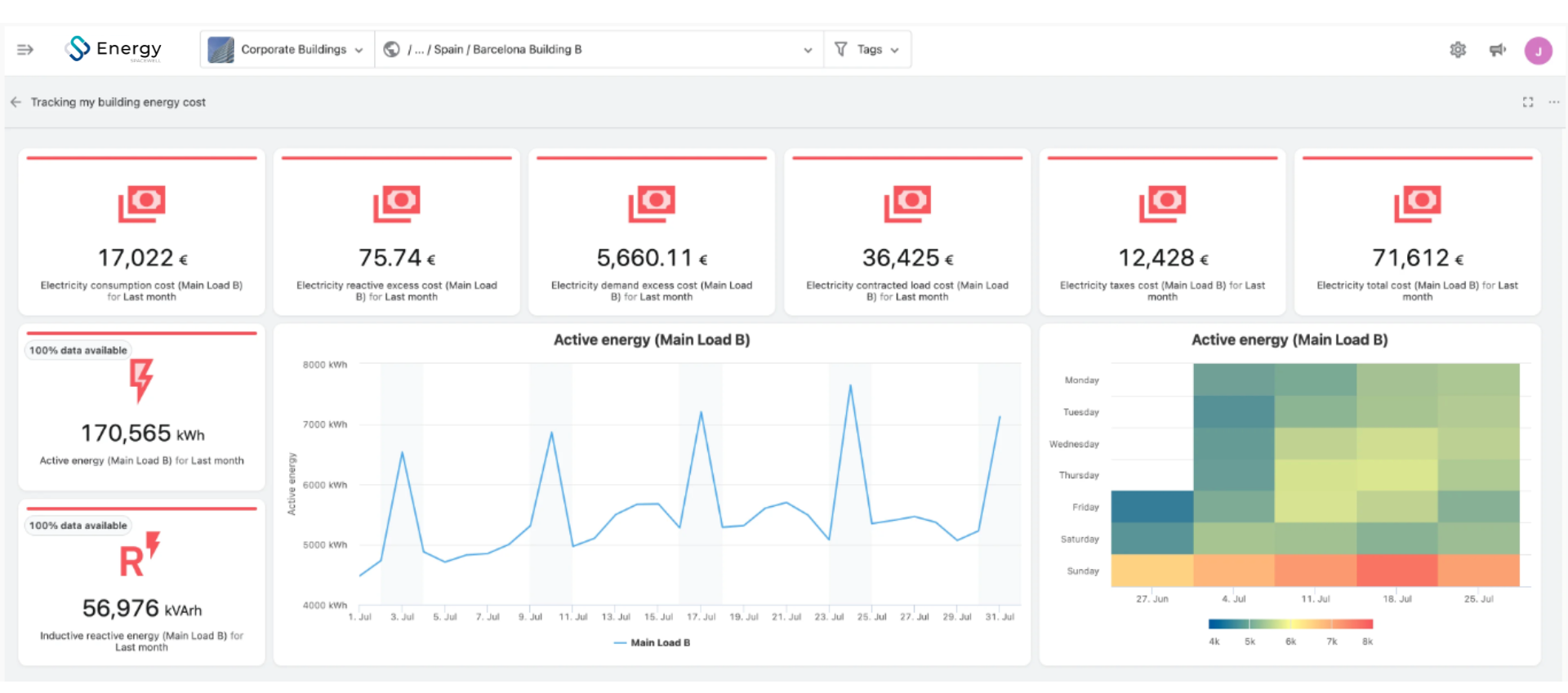Effective energy management is a crucial aspect of facility management that holds the key to unlocking significant cost savings, enhancing sustainability, and minimising environmental impact. By implementing strategic energy management practices, facilities can optimise their energy consumption, improve operational efficiency, and contribute to a greener future.
In this week’s article, we will explore the potential of energy management in facilities, highlighting its benefits and discussing key strategies that facility managers can implement to unleash its full potential. If you’re interested, keep on reading!
The Importance of Energy Management in Facilities
According to forecasts, the Facility Management (FM) Market in the United Kingdom is projected to witness growth from USD 68.16 billion in 2023 to USD 73.97 billion by 2028. This represents a compound annual growth rate (CAGR) of 1.65% during the forecast period of 2023-2028.
With strong growth in the sector, it is no surprise that facilities consume a substantial amount of energy for heating, cooling, lighting, and powering equipment. However, many facilities suffer from energy waste, inefficient systems, and outdated practices, leading to unnecessary expenses and an increased environmental footprint. The United States Environmental Protection Agency (EPA) estimates that, on average, commercial buildings waste 30% of the energy they consume.
This is where energy management comes into play: by actively monitoring, controlling, and optimising energy usage, facilities can significantly reduce their energy consumption and associated costs.
In addition, energy management plays a vital role in supporting sustainability goals. Indeed, the global drive towards a low-carbon future requires a shift towards cleaner and more efficient energy usage. Facilities embracing energy management practices will contribute to reducing greenhouse gas emissions, conserving natural resources, and mitigating climate change.
Benefits of Effective Energy Management
Implementing effective energy management practices brings forth several benefits for facilities such as:
Cost Savings:
Energy represents a significant operational cost for facilities. By identifying and addressing energy waste, optimising systems, and adopting energy-efficient technologies, facilities can experience substantial cost savings, which can then be reinvested in other areas or allocated to the facility’s infrastructure improvement.
Enhanced Operational Efficiency:
Efficient energy management enables facilities to optimise their energy consumption patterns. By analysing energy usage data, identifying inefficiencies, and implementing targeted improvements, you can streamline operations and enhance the overall efficiency of your plant.
Environmental Sustainability:
Facilities have a responsibility to minimise their environmental impact. Energy management plays a crucial role in this regard, allowing facilities to reduce their carbon footprint, conserve natural resources, and contribute to a cleaner and greener future.
6 Key Strategies for Unleashing Energy Management Potential in your Facilities
To unleash the potential of energy management in facilities, you can implement the following strategies:
1. Energy Audits and Benchmarking:
Conducting energy audits and benchmarking the facility’s energy performance are essential initial steps. This process involves assessing energy consumption patterns, identifying your areas of waste, and setting benchmarks to measure progress. By understanding the facility’s energy profile, as a manager, you can develop targeted action plans.
2. Implementing Energy-Efficient Technologies:
Upgrading to energy-efficient systems and equipment is a fundamental and easy-to-implement strategy. This may include installing LED lighting if you still haven’t done so, energy-efficient HVAC systems, smart controls, and advanced building automation systems. These technologies will enable you to optimise energy usage and reduce the waste of your plants.
3. Monitoring and Data Analytics:
Real-time energy monitoring and data analytics tools provide valuable insights into energy consumption patterns. By tracking the energy usage of your plant, identifying trends, and monitoring performance, facility managers can proactively identify areas for improvement and make data-driven decisions to optimise energy efficiency.
4. Employee Engagement and Training:
Engaging your employees in energy management initiatives is crucial for success. Educating your staff about energy-saving practices, encouraging responsible energy usage, and incentivising energy-conscious behavior can lead to a significant reduction in energy waste. Keep in mind that workers don’t usually have a technical background, thus must be given a correct and easy way to understand your goals.
5. Renewable Energy Integration:
Incorporating renewable energy sources, such as solar panels or wind turbines, can further enhance the energy efficiency of your facilities. By generating clean energy on-site, facilities can reduce their dependence on conventional energy sources and lower their carbon emissions.
6. Continuous Improvement and Performance Tracking:
Energy management is an ongoing process. As a facility manager, you should establish performance metrics, track progress regularly, and make adjustments as needed. By continuously seeking improvement opportunities and embracing emerging technologies and best practices, you will continually optimise your energy management efforts.
If you don’t know where to start, we encourage you to watch our latest webinar about smart buildings. ⬇️
Connecting the Dots and Breaking down Data silos
In the digital age, harnessing the full potential of energy management in facilities requires more than just implementing energy-saving technologies and practices. It necessitates connecting the dots and breaking down data silos within the facility’s operations. Indeed, facilities generate vast amounts of data from various sources, including sensors, meters, and energy management systems. However, without proper integration and analysis, this data remains fragmented and underutilised.
By embracing data integration and breaking down silos, facility managers can gain holistic insights into energy consumption patterns, identify inefficiencies, and make informed decisions to drive efficiency.
Unlocking the True Benefits of Smart Buildings
Integrating an Energy Management System (EMS) with other facility management tools, such as maintenance management and occupancy tracking, enables a comprehensive view of the facility’s energy performance and allows for targeted optimisation strategies. By connecting the dots and breaking down data silos, facilities can unlock the true power of energy management and pave the way for a more sustainable and efficient future.
Facilities often have multiple systems and devices that generate energy-related data, such as smart meters, HVAC controls, lighting controls, and submetering devices. Breaking down data silos involves aggregating and centralising this data into a unified platform or dashboard.
The illustration below gives you an idea of what Spacewell Energy (Dexma) Dashboards look like. They centralise and group together all the information you need. They can also be customised and feature a wide range of functionalities.
This centralised approach enables facility managers to access real-time and historical energy data, perform in-depth analysis, and gain insights into overall energy performance.
Once data silos are broken down and energy data is integrated, advanced analytics techniques and predictive modelling can be applied to uncover hidden patterns, anomalies, and optimisation opportunities. By analysing historical energy consumption data, you can identify trends, predict future energy demands, and optimise energy usage patterns. Predictive modelling can also help in identifying potential equipment failures or deviations from optimal performance, enabling proactive maintenance and energy-saving measures.
Connecting the dots between energy data and operational processes allows for continuous monitoring and feedback loops. Real-time energy monitoring combined with intelligent alerts and notifications can empower you to take immediate action when energy consumption exceeds predefined thresholds or anomalies are detected. This proactive approach ensures that energy efficiency measures are continuously evaluated and adjusted, leading to sustained improvements over time.
Breaking down data silos and connecting the dots requires collaboration and cooperation among various stakeholders involved in facility management. This includes facility managers, energy managers, operations teams, maintenance staff, and IT departments, among others. By fostering a culture of data sharing, transparency, and collaboration, facilities can leverage the collective expertise and insights of their teams to identify energy-saving opportunities, troubleshoot issues, and implement effective energy management strategies.
To conclude, effective energy management holds immense potential for facilities, enabling them to unlock significant cost savings, enhance operational efficiency, and contribute to environmental sustainability. By implementing strategies we have discussed above such as energy audits, adopting energy-efficient technologies, monitoring and analysing energy usage, engaging employees, and integrating renewable energy sources, you can unleash the full potential of energy management.
Embracing energy management not only benefits the bottom line but also reinforces the facility’s commitment to a greener future. The time to harness the power of energy management in facilities is now, and the rewards are significant for both facility owners and the planet.
Ready to start? Don’t miss this recorded session where you will learn how to improve occupant comfort, and enhance security through data collaboration. In this 20-minute session, our UK&I Country Manager Billal Vindhani explores the challenges facility managers face in 2023 and highlights the importance of breaking down data barriers to unlock the true benefits of smart buildings. Watch the recording now: ⬇️

![Unlocking the Potential of Smart Buildings [Webinar] | Spacewell Energy - Dexma](https://no-cache.hubspot.com/cta/default/437281/d2bba363-8bd4-4f9d-b6df-0ff262485e46.png)

![Unlocking the Potential of Smart Buildings [Webinar] | Spacewell Energy - Dexma](https://no-cache.hubspot.com/cta/default/437281/e51b765c-c0c9-46b9-8e0a-b734ea6c4252.png)

